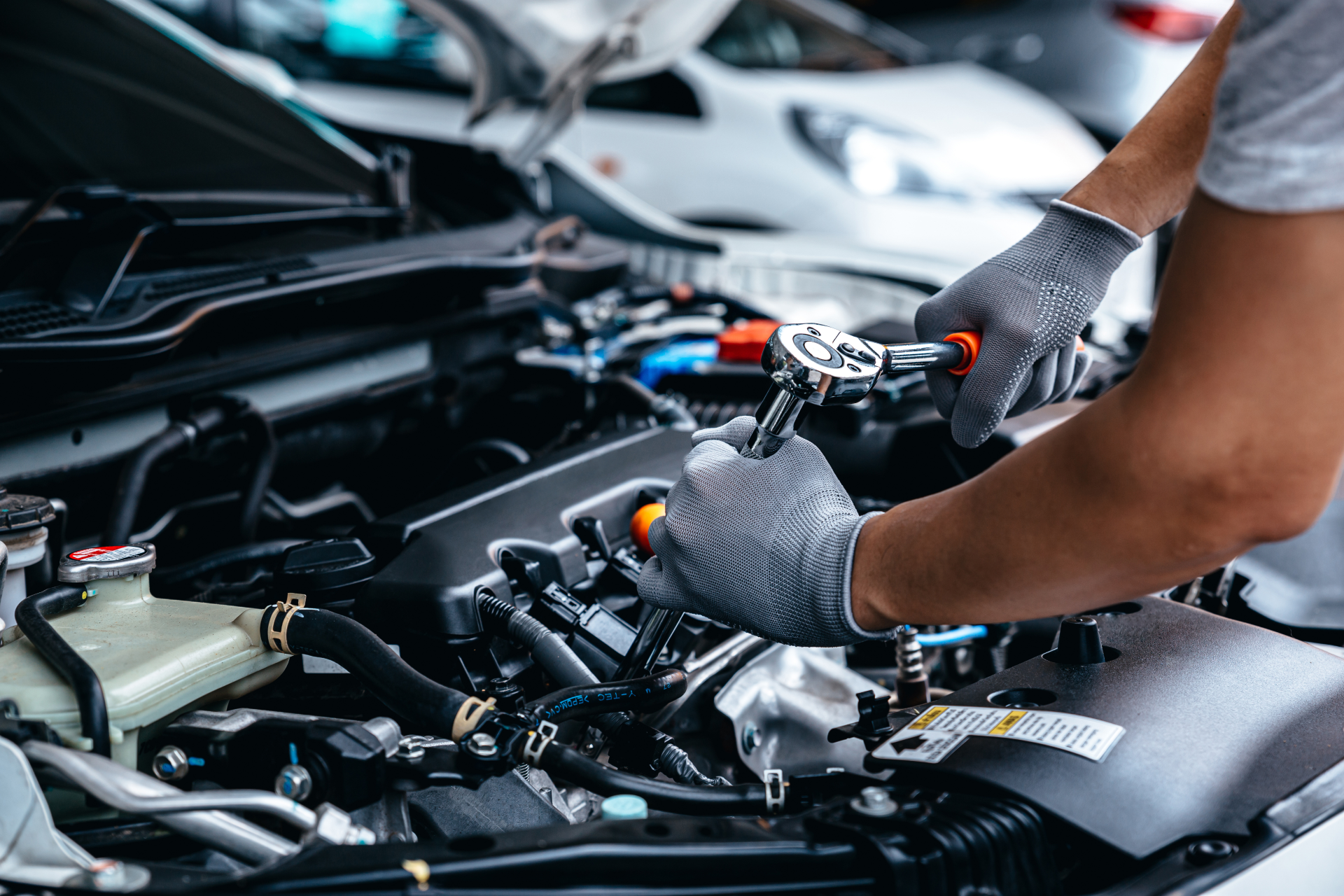Air/Fuel Ratio
Obtaining Optimal Efficiency
Maintaining the correct Air to Fuel Ratio is crucial for:
- Fuel efficiency
- Lower emissions
- Engine performance
- Preventing engine damage
For optimal efficiency, power and emissions control,
internal combustion engines utilize an air-fuel ratio to maintain balance between fuel and air in the combustion process.
The ideal air-fuel ratio for complete combustion of gasoline in most engines is
14.7:1
(14.7 parts air to 1 part fuel).
This is known as the stoichiometric ratio, where no unburned fuel or oxygen is left in the exhaust.
Maintaining a balance near this ratio maximizes energy and minimizes harmful emissions.
(Engines using propane, natural gas or ethanol use different stoichiometric ratios. Diesel engines focus more on controlling the amount of fuel injected rather than balancing an exact air-fuel ratio).
A lean condition has more air than fuel (e.g., 16:1 or higher).
Lean mixtures occur during light load conditions, like cruising at a steady speed.
While lean conditions can improve fuel economy, running too lean can cause a loss of engine power and can lead to long-term damage from engine knocking and higher temperatures.
A rich condition has more fuel than air (e.g., 12:1 or lower).
This mixture generates more power often used during acceleration or when the engine is cold.
While a rich mixture increases performance, it also uses more fuel and can lead to higher emissions of pollutants and unburned hydrocarbons.
Modern vehicles use computers and sensors to monitor the air-fuel ratio and make automatic adjustments to obtain optimal performance.
Oxygen sensors in the exhaust system monitor oxygen in the exhaust gasses.
Mass Airflow Sensors (MAF) and Manifold Absolute Pressure Sensors (MAP) help measure air entering the engine.
The Throttle Position Sensor (TPS) measures the angle of the throttle valve, also indicating how much air is entering the engine.
The Engine Coolant Temperature (ECT) Sensor measures the engine temperature to adjust fuel delivery during cold starts.
These sensors feed data to the Engine Control Unit (ECU), the main computer of the vehicle.
The ECU fine-tunes the air-fuel ratio dynamically using fuel trim data to manipulate the fuel injectors by controlling injector timing and pulse width.
Today’s Gasoline Direct Injection (GDI) engines are highly precise using tighter clearances, yet they require clean components to function properly.
Carbon deposits found on intake valves, fuel injectors, and in combustion chambers accumulate rapidly due to high heat and high pressure.
Regular oil/filter, fuel filter, air filter and spark plug changes are just the start to maintaining engine performance.
Fuel additives* enhance fuel quality and aid in cleaning fuel injectors, fuel filters, and combustion chambers. Fuel additives require driving once the product is installed to achieve benefits.
*Always follow the manufacturer's directions to avoid harm to sensors and gauges when using additives.
Air induction cleaners are designed to clean the air intake system:
throttle body, intake valves, and intake manifold.
When performed by a trained technician, it can improve throttle response, air flow and aid in restoring fuel efficiency and engine performance while reducing harmful exhaust emissions.
Don’t let misfires, rough idling, or sluggish acceleration slow you down. At CT’s Automotive, our expert technicians specialize in diagnosing and repairing engine performance issues—so you can enjoy a smoother, more powerful ride every time you hit the road.
We've got you covered on gaining back the power you need to venture the roads less traveled
Maintenance is the key for obtaining optimal efficiency!





